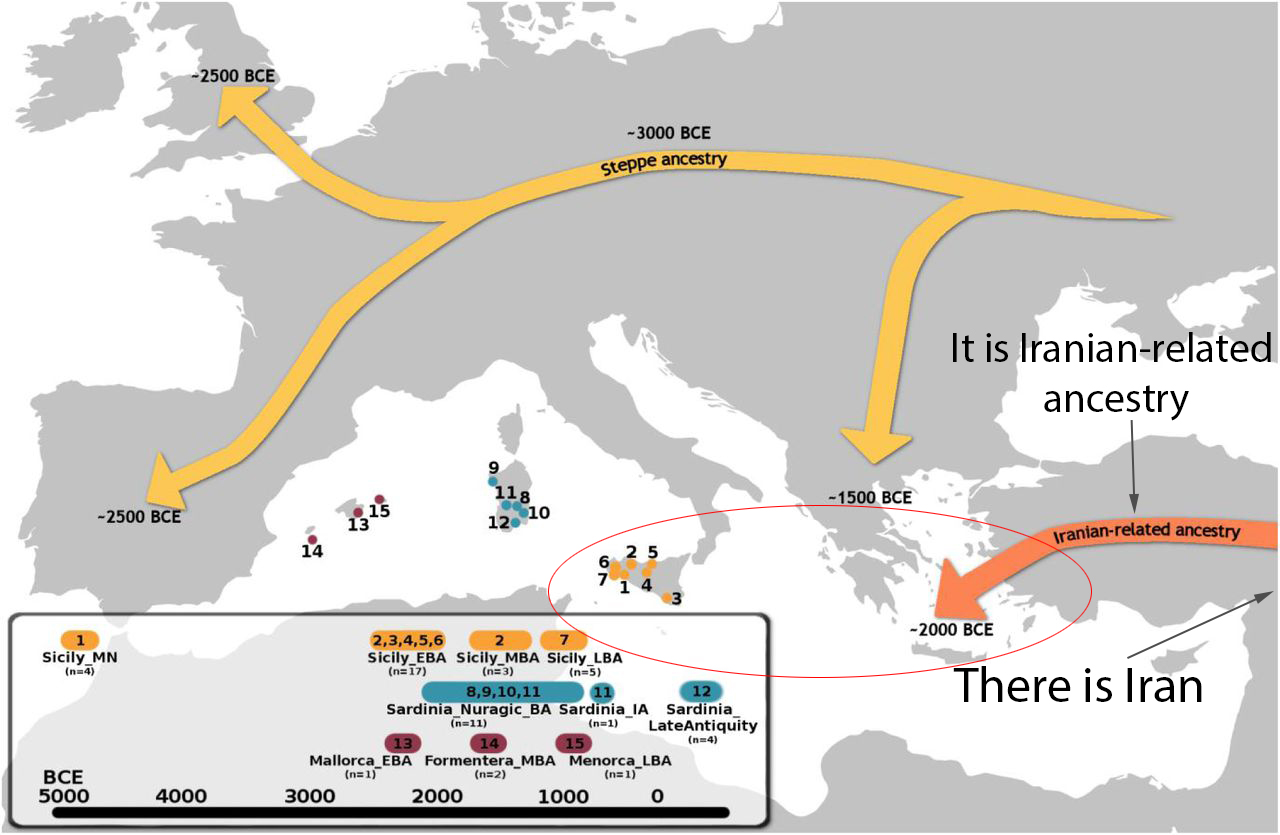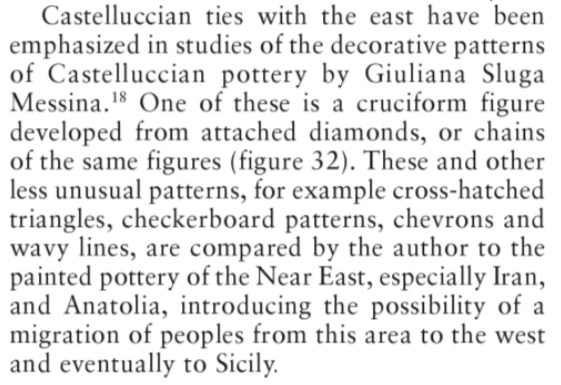Shahmiri: You seem to me to have a hard time comprehending what several people have said. It is clear that "some Iranian related ancestry" was part of the overall admixture of the Early European Farmer DNA makeup that came from Anatolia to Europe during the Neolithic. This 2019 paper, the most recent one I have scene on EEF DNA clearly notes the Anatolian Farmers got like close to 90% of their DNA from the earlier Anatolian Hunter Gathers + some 10% from an Iranian related ancestry. I don't think anyone has ever denied some Iran related DNA from Neolithic up to Bronze age as well, was part of the admixture of modern Europeans, or at least some Europeans. It is clear Iran related ancestry (or similar CHG type) entered all of Italy in the Neolithic period in Lazio/Rome (Antonio et al 2019) and Sicily in Bronze Age (Fernandes et al 2020) and I would expect once Neolithic samples from Sicily are published (VandeLoosdrecht et al 2020 pre-print paper) it will be established Iran related ancestry was in Sicily during the Neolithic similar to Lazio/Rome.
Feldman et al. 2019 linked below
https://www.nature.com/articles/s41467-019-09209-7
Here is a quote from the paper above
"Accordingly, a mixture of AHG and Neolithic Iranians provides a good fit to AAF in our qpAdm modeling (χ2p = 0.296), in which AAF derive most of their ancestry (89.7 ± 3.9%) from a population related to AHG (Supplementary Tables 4 and 6). A simpler model without contribution from Neolithic Iranians (i.e., modeling AAF as a sister clade of AHG) shows a significant reduction in model fit (χ2p = 0.014). This suggests a long-term genetic stability in central Anatolia over five millennia despite changes in climate and subsistence strategy. The additional Neolithic Iranian-related ancestry (10.3 ± 3.9%) presumably diffused into central Anatolia during the final stages of the Pleistocene or early Holocene, most likely via contact through eastern Anatolia."
Speaking for me, I am not denying Iranian related ancestry from Neolithic to Bronze Age is part of the source ancestry of some, maybe many, Europeans. And while I can't speak for anyone else, I don't get the sense anyone else in this thread is either, I found found 95% of the people that post here are either well versed in what the research says or when presented with the research studies, tend to to accept what it states. That does not mean people don't critically read papers (they should) but while yes there are some folks with there own personal troll agendas, the mods and advisors here do a good job of keeping those folks in check.
Iran is a country with a great history going back to the Persians, and archaeologist document it has had humans living there going way, way back. Anyone who thinks otherwise is just ignorant in my view.
With all that said, your view that PIE homeland was ancient Iran is again something that is just your conjecture. Fine, you are entitled to it, as I have I said I am agnostic on where the PIE homeland was.



